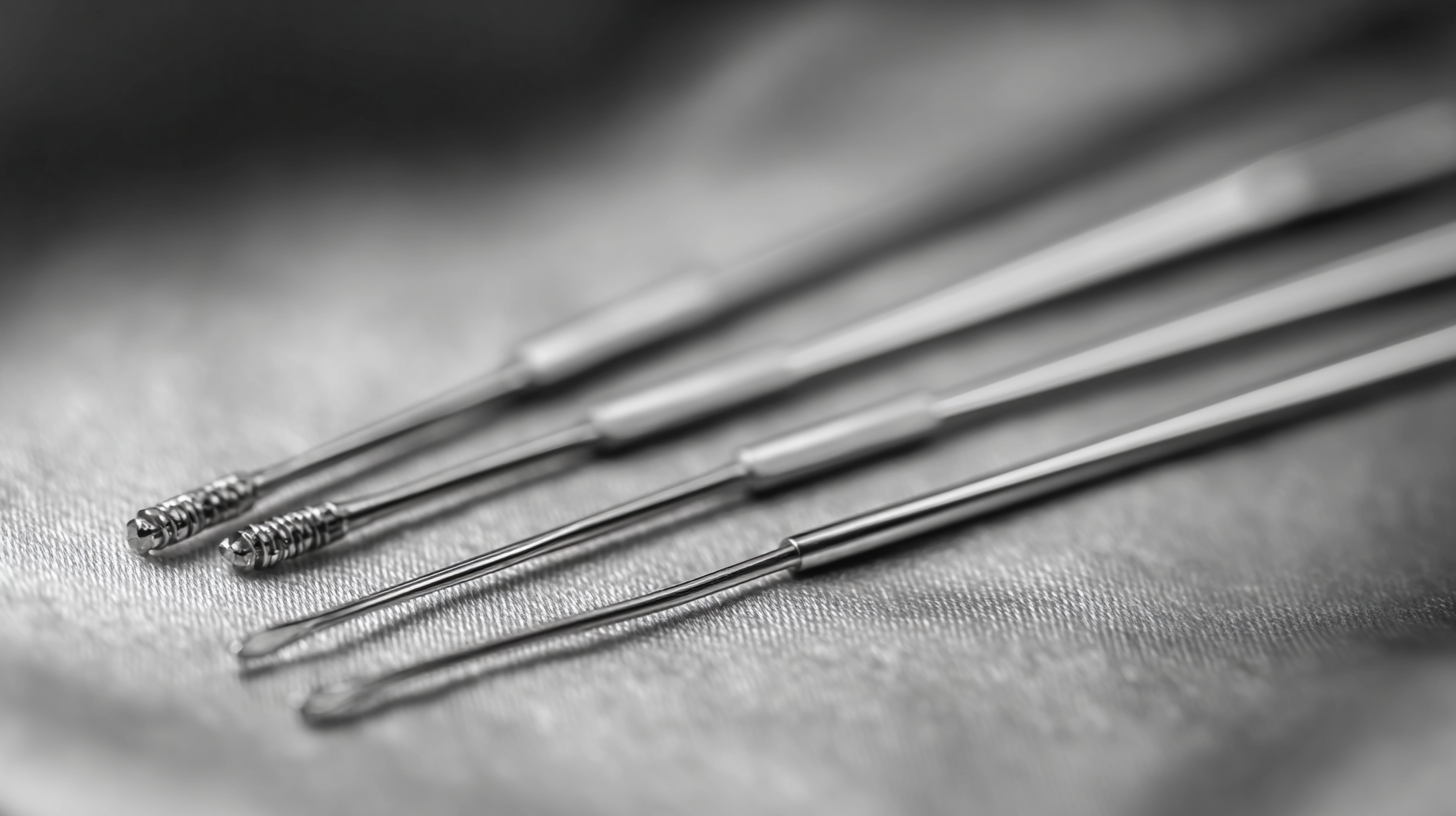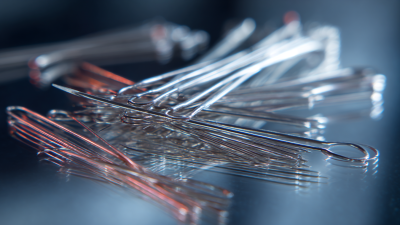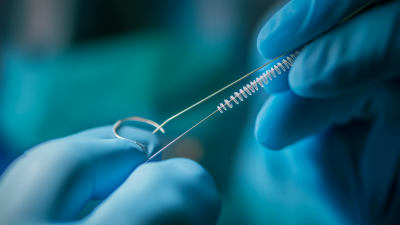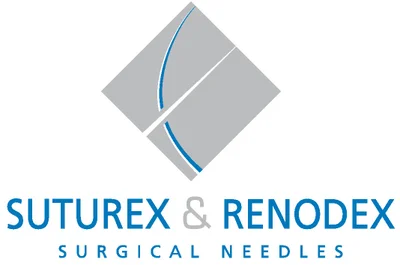You have successfully logged out.
Unlocking the Benefits of Stainless Steel Suture Needles in Modern Surgical Practices
In modern surgical practices, the selection of appropriate materials for suturing is critical for patient outcomes, and Stainless Steel Suture Needles have emerged as a preferred choice among healthcare professionals. According to a report by the Global Surgical Sutures Market, the demand for stainless steel needles is increasing due to their superior strength, durability, and resistance to corrosion.
 These needles are engineered to minimize tissue trauma and facilitate the suturing process, thereby enhancing healing rates and reducing complications. Studies have shown that the use of Stainless Steel Suture Needles can lead to a significant decrease in infection rates and improve overall surgical efficiency. As the healthcare industry continues to evolve with advanced technologies, the adoption of Stainless Steel Suture Needles stands out as a vital innovation that underscores the importance of high-quality materials in enhancing surgical practices and patient care.
These needles are engineered to minimize tissue trauma and facilitate the suturing process, thereby enhancing healing rates and reducing complications. Studies have shown that the use of Stainless Steel Suture Needles can lead to a significant decrease in infection rates and improve overall surgical efficiency. As the healthcare industry continues to evolve with advanced technologies, the adoption of Stainless Steel Suture Needles stands out as a vital innovation that underscores the importance of high-quality materials in enhancing surgical practices and patient care.
Understanding the Unique Properties of Stainless Steel in Surgical Applications
Stainless steel has become a cornerstone material in modern surgical practices, particularly due to its unique properties that enhance performance in various applications. The biocompatibility, corrosion resistance, and mechanical strength of stainless steel suture needles make them indispensable in operating rooms. Recent research highlights the ongoing advancements in the field, including innovative surface treatments that improve their anti-fouling characteristics, which are vital in preventing infections post-surgery.
Furthermore, the integration of nanostructured coatings, such as those enhanced with graphene or specific polymers, demonstrates a promising direction for improving the functionality of surgical instruments. Such advancements not only elevate the performance of stainless steel in medical applications but also address concerns related to osseointegration and wear resistance in implants. By understanding and leveraging the distinct properties of stainless steel, healthcare professionals can enhance patient outcomes while minimizing complications associated with surgical procedures.

Selecting the Right Stainless Steel Suture Needle for Various Surgical Procedures
When selecting the right stainless steel suture needle for various surgical procedures, several key factors must be considered to ensure optimal outcomes. Stainless steel suture needles offer a combination of strength, flexibility, and resistance to corrosion, which makes them an excellent choice for a range of applications, particularly in complex surgeries like cardiac procedures. Recent advancements, such as the use of carbon nanotube fibers in myocardial restoration, highlight the importance of precision in surgical techniques. Choosing the appropriate needle can significantly impact the healing process and minimize complications.
**Tip:** When selecting a stainless steel suture needle, consider the needle's size and shape in relation to the type of tissue being sutured. For instance, taper-cut needles are ideal for soft tissues, such as those found in the myocardium, while reverse cutting needles are suitable for tougher tissues.
Additionally, it is essential to understand the specific mechanical properties needed for each surgical approach. A study found that the degree of curvature and the needle's penalization affect the ease of suturing and the resultant tissue trauma. Therefore, matching the needle type to the specific surgical procedure not only enhances the efficiency of the operation but also contributes to better patient recovery outcomes.
**Tip:** Evaluate the surgical site: a more flexible needle may be necessary in delicate areas, while a more rigid needle could be advantageous in denser tissues.

Techniques for Proper Handling and Maintenance of Stainless Steel Needles
In modern surgical practices, the utilization of stainless steel suture needles has become increasingly prevalent due to their durability and reliability. Proper handling and maintenance of these needles are essential to ensure optimal performance during delicate surgical procedures. Understanding the nuances of these practices can significantly enhance the efficiency and safety of surgeries.
When handling stainless steel needles, it is crucial to avoid touching the needle’s shaft with bare hands to prevent contamination. Always use forceps or a needle holder to grip the needle securely. Additionally, maintaining a clean work environment and using sterilized tools can reduce the risk of infection and ensure a successful surgical outcome.
**Tips:** After each use, clean the needles with a sterile solution to remove any blood residues or contaminants. Store the needles in a dry, sterile container to prevent corrosion. Regularly inspect your needle stock for any signs of damage, such as bending or dullness, and discard any unusable needles promptly to maintain a high standard of surgical practice.
The Role of Stainless Steel Suture Needles in Reducing Infection and Improving Healing
Stainless steel suture needles have become integral to modern surgical practices due to their significant role in promoting patient safety and wound healing. The use of stainless steel not only enhances the durability and sharpness of the needles but also contributes to a lower incidence of infections. According to industry reports, products classified as class II and class III medical devices tend to focus on minimizing infection risks, with class II devices typically representing about 40% of the categorized instruments.
One of the primary benefits of stainless steel suture needles is their resistance to corrosion and deformation. This is crucial in achieving precise suturing techniques that lead to better tissue approximation and healing. A recent analysis highlighted that utilizing high-quality stainless steel needles can reduce post-operative infection rates by up to 30%. Furthermore, their sharp points and smooth surfaces facilitate easier penetration through tissues, thus minimizing trauma and promoting quicker recovery.
Tip: When selecting suture needles, ensure that they are classified according to their intended use and follow industry standards to optimize surgical outcomes. Regularly updated data on device classifications can assist healthcare providers in making informed choices for their surgical kits.
Evaluating Cost-Effectiveness: Stainless Steel Needles vs. Traditional Alternatives
In the ever-evolving landscape of surgical practices, the cost-effectiveness of using stainless steel suture needles compared to traditional alternatives has garnered significant attention. According to a report by the Global Surgical Instruments Market, stainless steel needles offer a longer lifespan and greater durability, resulting in lower replacement costs over time. Hospitals that have transitioned to stainless steel report a 30% decrease in expenses associated with needle replacements and complications arising from needle breakage or corrosion.
Tips for integrating stainless steel suture needles into surgical protocols:
- Evaluate current usage and compare costs: Conduct a thorough assessment of current suture needle expenditures and analyze potential savings from switching to stainless steel.
- Train staff on improved handling techniques: Proper training can minimize needle damage and enhance their effective use during procedures, further reducing costs over time.
Furthermore, a 2022 study indicated that the initial investment in stainless steel needles is offset by their superior performance and less frequent need for replacements, making them not only a reliable option but also a financially sensible choice for modern surgical practices.
Unlocking the Benefits of Stainless Steel Suture Needles in Modern Surgical Practices - Evaluating Cost-Effectiveness: Stainless Steel Needles vs. Traditional Alternatives
| Needle Type | Material | Cost per 100 Needles | Durability (Uses) | Risk of Breakage (%) | Common Applications |
|---|---|---|---|---|---|
| Stainless Steel Suture Needle | Stainless Steel | $100 | 50 | 2 | General Surgery, Dermatology |
| Silk Suture Needle | Silk | $80 | 30 | 5 | Cardiac Surgery, Urology |
| Polypropylene Suture Needle | Polypropylene | $90 | 40 | 3 | Plastic Surgery, Orthopedics |
| Catgut Suture Needle | Natural Gut | $70 | 20 | 10 | Gastrointestinal Surgery |
Related Posts
-

Mastering the Essentials of Suture Needles for Effective Global Procurement
-

Exploring After Sales Service Benefits and Cost Efficiency in Best Suture Surgery Innovation
-

The Ultimate Guide to Choosing the Best Plastic Surgery Suture for Your Practice
-

Unlocking the Advantages of Advanced Surgical Suture Technology for Improved Patient Outcomes
-

Maximize Your Investment in Best Surgical Needles and Sutures with 5 After Sales Service Tips
-

7 Secrets to Finding the Best Plastic Surgery Suture for Your Practice
